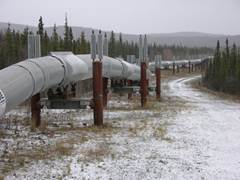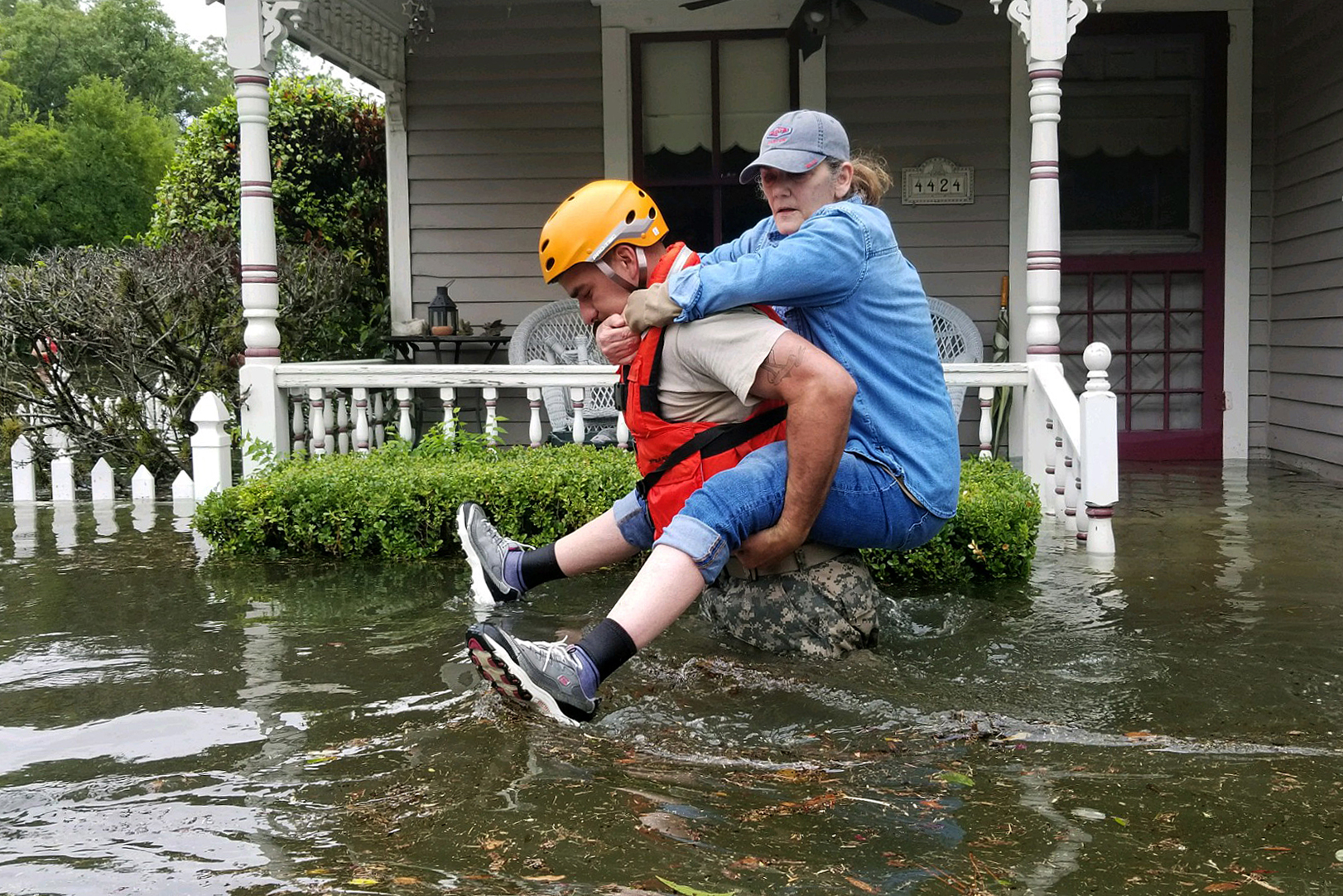Justin Gundlach
Climate Law Fellow
The Alaska Liquefied Natural Gas (LNG) Project is enormous. It is designed to link natural gas drilling operations on the North Slope of Alaska to liquefaction facilities in Nikiski (south of Anchorage) via an 800-mile pipeline. The Natural Gas Act assigns the Federal Energy Regulatory Commission (FERC) responsibility for licensing new natural gas infrastructure, and requires FERC to conduct an environmental review of such infrastructure consistent with the requirements of the National Environmental Policy Act (NEPA). FERC is therefore responsible for conducting an environmental review of the Alaska LNG Project.
FERC has already taken the first step in the NEPA process by deciding to draft a full environmental impact statement (EIS) for the Project. The next step is to define the scope of what that statement will consider. The Sabin Center responded last week to FERC’s request for comments about the scope of the Alaska LNG Project’s EIS. The Sabin Center’s comments emphasize the importance of conducting what is sometimes called a “reverse NEPA” review, meaning a review of the effects that Alaska’s rapidly changing climate is expected to have on the Project as well as the effects the Project is expected to have on the Alaskan environment. That and other key points raised in the comments are discussed below the jump.
Center responded last week to FERC’s request for comments about the scope of the Alaska LNG Project’s EIS. The Sabin Center’s comments emphasize the importance of conducting what is sometimes called a “reverse NEPA” review, meaning a review of the effects that Alaska’s rapidly changing climate is expected to have on the Project as well as the effects the Project is expected to have on the Alaskan environment. That and other key points raised in the comments are discussed below the jump.
But first, take note of the larger context. As the agency responsible for licensing natural gas infrastructure and facilities, FERC sits at the confluence of several significant trends and pressures. These include increasingly rapid and consequential changes to the climate, fevered efforts to build new natural gas infrastructure amid a period of rapidly growing supply and demand, and calls for more coherent application of NEPA by agencies and courts considering the climate-related environmental impacts of and on reviewable activities. This confluence has given rise to a number of contentious environmental reviews of natural gas infrastructure projects. A central point of contention has been whether FERC adequately considers indirect effects both upstream (e.g., of drilling and extraction) and downstream (e.g., of transport and combustion by end-users) of the project it is reviewing.[1] The Alaska LNG Project sits squarely at the confluence of the trends noted above, and, as explained below, its design will make it difficult for FERC to avoid giving full consideration to impacts caused indirectly by well development and gas extraction in the North Slope as well as the shipping and ultimate of combustion of gas after it leaves Nikiski.
SCCCL’s comments explain that NEPA requires the Commission to consider the environmental impacts of (1) sea level rise, sea ice loss, and associated storm surge, flooding, and coastal erosion risks, (2) thawing ice-rich permafrost (“IRP”) or thermokarst, and (3) reasonably foreseeable indirect impacts of upstream and downstream Project-related activities. To be adequate, the Commission’s consideration of these features must integrate them into a baseline for projected environmental impacts. Such a baseline is especially important in this case, because Alaska’s aberrantly rapid rate of warming relative to other regions of the U.S. and the world promises especially disruptive effects on both coastal and inland facilities.
The Sabin Center’s comments also point out that FERC has already recognized the relevance and importance of climate change impacts to similar facilities elsewhere. For instance, in connection with a proposed LNG export facility in flood-prone coastal Louisiana, the Mississippi River LNG Project, FERC directed the applicant to supplement its initial reports with information about potential impacts of sea level rise and storms. Even more recently, FERC’s Environmental Assessment—not even a full EIS—of the Dominion Cove Point LNG export facility on the Chesapeake Bay took into account several implications of climate change for that facility.
As for what FERC should consider in its EIS for the Alaska LNG Project, the Sabin Center’s comments highlight the following:
Direct impacts. In Alaska, the loss of sea ice is an additional and amplifying factor to consider when assessing the effects of sea level rise and sea warming on coastal facilities, such as flooding, storm surge, and storm-related wind damage.[2] Thawing IRP or thermokarst, a well-known scourge of Alaskan infrastructure,[3] promises to become increasingly ubiquitous amid Alaska’s supernormal warming trend.[4] One recent analysis estimates that IRP bearing capacity in the North Slope of Alaska has fallen by 22% since 1980 and that, by 2040, it will have fallen by 50%.[5] In sum, a changing and battered coastline and falling inland bearing capacity could each be highly disruptive to facilities and pipelines,[6] which in turn could have significant impacts on the environment if compromised—it carries flammable and potentially explosive gas, after all.
Indirect impacts. Extracting natural gas from wells in the North Slope, processing it for transport across Alaska, cooling it for loading into tankers, transporting it in those tankers, and, of course, combustion by end-users, are all activities that (a) will occur as a result of the Project, (b) would not occur but for the Project, and (c) will occur to an extent that is foreseeable and readily calculable. Furthermore, each of these component activities has predictable environmental impacts.[7] The circumstances make the Project unlike others licensed by FERC that have involved a node or link in a network of substantially extant natural gas infrastructure.[8] As such, FERC cannot claim in this case that the Project’s indirect impacts, both upstream and downstream, are somehow not foreseeable. Instead, FERC must recognize that, because the origins of the gas to be extracted and transported are already known, and the nature of that extraction and transport well understood, the indirect effects of those activities can reasonably be anticipated—and therefore must be reflected in an EIS.
Footnotes
[1] See Maureen O’Dea Brill, Assessing the Scope of the National Environmental Policy Act: Recent Attempts by Environmentalists to Add Climate Change Considerations into NEPA Review, 54 Nat. Resources J. 409 (2014).
[2] Coastal Impacts, Adaptation, and Vulnerabilities: A Technical Imput to the 2013 National Climate Assessment (Virginia Burkett & Margaret Davidson eds. 2012) (“Ice makes northern regions particularly susceptible to temperature change; for example, an increase of two degrees Celcius could take a system from frozen to unfrozen with extensive implications. This is not the case for coastal regimes anywhere else in the U.S. and represents a major additional stressor in addition to sea-level rise, waves, and storm surge.”).
[3] Martha K. Raynolds et al., Cumulative Geoecological Effects of 62 Years of Infrastructure and Climate Change in Ice-Rich Permafrost Landscapes, Prudhoe Bay Oilfield, Alaska, 20 Global Change Biology 1211 (2014); see also Oscar J. Ferrians, Jr. et al., Permafrost and Related Engineering Problems in Alaska, Geological Survey Professional Paper 678 (1969), https://on.doi.gov/1PQgYeF.
[4] Raynolds et al., supra note 3; see also. Eunkyoung Hong et al., Thaw Settlement Hazard of Permafrost Related to Climate Warming in Alaska, 67 Arctic 93 (Mar. 2014).
[5] See Hong et al., supra note 4.
[6] Frederick E. Nelson, Lawson W. Brigham et al., U.S. Arctic Research Commission, Permafrost Task Force Report: Climate Change, Permafrost, and Impacts on Civil Infrastructure 25–34 (Dec. 2003) (discussing various impacts, including effects on Trans-Alaska Pipeline’s supporting structure).
[7] See, e.g., Timothy Vinciquerra et al., Regional air quality impacts of hydraulic fracturing and shale natural gas activity: Evidence from ambient VOC observations, 110 Atmospheric Env’t 144 (2015) (identifying natural gas hydrofracture drilling operations as sole plausible cause for increase in ambient emissions of ethane and VOCs—and, by inference, methane—in region downwind of drilling operations in Pennsylvania and West Virginia); Victor M. Heilweil et al., Stream Measurements Locate Thermogenic Methane Fluxes in Groundwater Discharge in an Area of Shale-Gas Development, 49 Envtl. Sci. & Tech. 4057 (2015) (measuring migration of fingerprinted methane, i.e., gas not attributable to sources other than drilling, into waters near shale-gas development operations); Christopher W. Moore et al., Air Impacts of Increased Natural Gas Acquisition, Processing, and Use: A Critical Review, 48 Envtl. Sci. & Tech. 8349 (2014) (discussing several case study-based natural gas lifecycle emissions assessments); National Research Council, Cumulative environmental effects of oil and gas activities on Alaska’s North Slope (2003).
[8] Compare FERC, Environmental Assessment for the Cove Point Liquefaction Project, Dominion Cove Point LNG, LP Docket No. CP13-113-000, at 163 (May 2014), https://bit.ly/1k5fNM0 (“A more specific analysis of Marcellus Shale upstream facilities is outside the scope of this analysis because the exact location, scale, and timing of future facilities are unknown.”).




